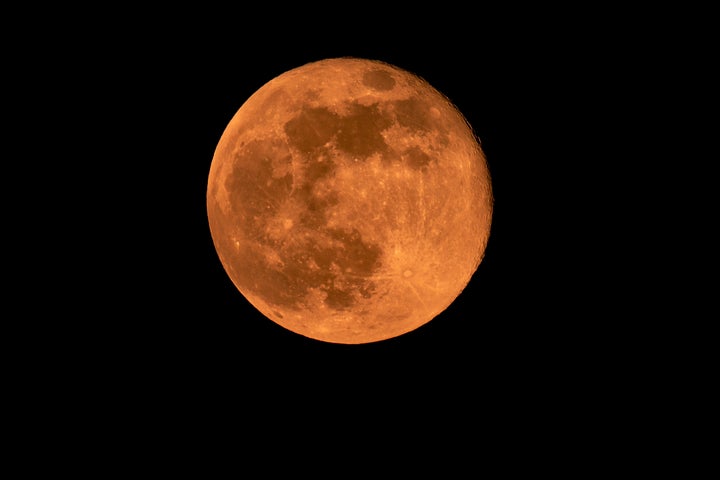
If (like me) you tend to get a little sappy over sunsets, full moons, and basically anything vaguely celestial, you’ll doubtless be excited to hear about August’s upcoming pair of supermoons (culminating in a rare ‘blue moon’).
The phenomena will occur on August 1st and Wednesday the 31st of August. On these occasions, the moon will be unusually close to the Earth, making it appear “up to 14% bigger and 30% brighter compared with when it is furthest away.” The later supermoon is set to be bigger, brighter, and more impressive than the first.
The two of these combined means that August is a “blue moon” (as in, “once in a blue moon”) month. So, we thought we’d find out how to spot the occurrences – and, crucially, how to finally get a decent moon pic.
So, how can I see these supermoons?
The gorgeous displays will peak at different times – but only one will involve an early AM wakeup call.
The first, a Sturgeon moon at 222,159 miles from Earth, will peak at a respectable 7:31 PM in the UK. The second, a brighter, nearer (222,043 miles away) supermoon, is making us work for its beauty with a 2:35 AM pinnacle. This is technically the blue moon, being the second one of the month.
You don’t need to adhere too closely to those optimal times, though. The Royal Observatory in Greenwich shared that “Seeing moonrise just after sunset, or moonset just before sunrise, will be an impressive sight as it will appear enormous compared to the surrounding landscape.”
You likely don’t need binoculars or any special equipment, though these can add to the experience – you’ll likely spot a bit more detail.
OK, but how do I get that perfect pic?
Well, it depends on what equipment you’re using.
If you’ve got a camera, The Royal Observatory shared that “You can take good images of the Moon with just a single lens reflex (SLR) camera and a 250 mm telephoto lens. To get the best detail, you need a telephoto lens of at least 500 to 600 mm and ideally a long focal length telescope.”
In this case, they advise that you choose a location with an unobstructed view of the moon and try to set up away from buildings and other sources of heat.
“If you are using an SLR, a long focal length telescope and a tripod, then shutter speeds of 1/30th of a second are fine. Use a low ISO setting to reduce noise and underexpose slightly to prevent bright details burning out,” they added.
But if, like me, you’re going to be taking some snaps with a regular ol’ phone, TikToker and photography lover Celeste Meyer shared the following iPhone hack. Using an iPhone 14 Pro, they suggest you:
- Turn the exposure down to -2.0 – it helps to have Live Photo on
- Zoom in on the moon as close as possible
- Press and hold the screen to AE/EF lock on the moon
- Drag the sundial slider on the right of the screen all the way down slowly to help focus on the moon’s details
- Repeat locking and turning the sundial slider down until you have a crystal-clear image – this could happen the first time around if you’re lucky
You can see here just how perfect their pic ended up: